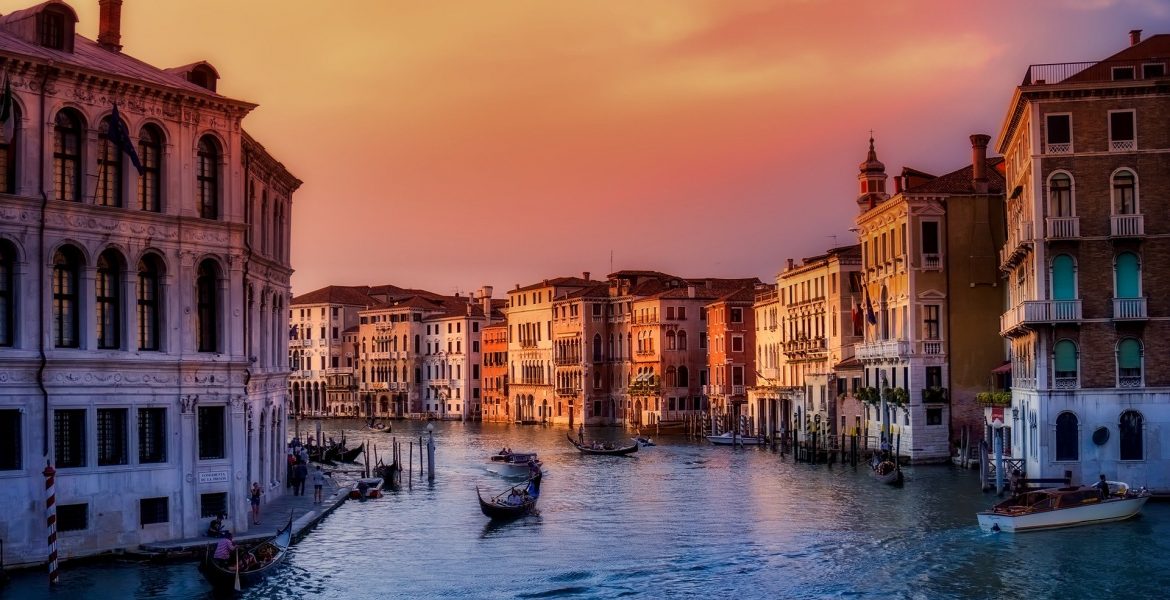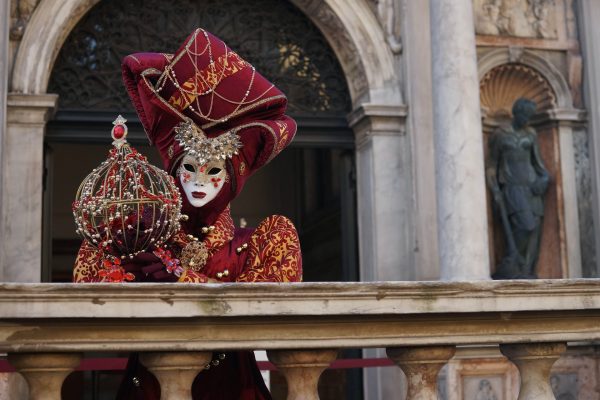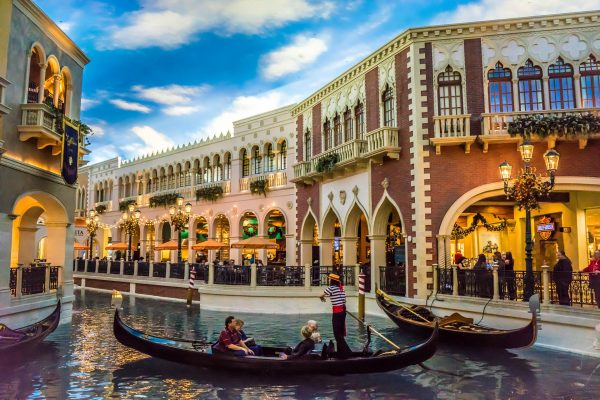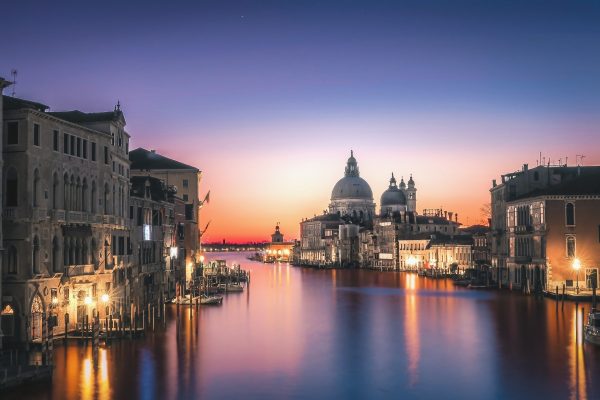
Best Venice Photography Locations
There’s no place that does kitsch as well as Venice. This may really mean that it does kitsch badly, because things that would look garish, ludicrous or over the top anywhere else feel just right here. Even sitting in a gondola with a rowing gondoliere feels authentic and not like those pressured, tasteless things like audience participation or clapping when the plane lands.
Venice is a trip back in time – so far back, in fact, that cars weren’t invented yet. The lack of engine noise makes this famous pedestrian city feel like a love letter to the world as it was then. Venice is so much more, too: the city of masks, of water, of bridges and of canals – 400 foot-bridges and 170 boat-canals to be exact. Most of all, she is Serenissima – the most serene city of all.
A large part of the 118 islands that make Venice rest on reclaimed land, or rather on poles that were driven into the ground below the water, into the clay that holds the city up still today, not sweating the small stuff: each year, Venice sinks about two millimetres. So, without trying to sound premonitory, come take pictures while you can. Humans have put together sublime cities all over the globe, sure, but some places seem almost like a cruel joke on all others: a laugh that says “you can do it like this, too”. Venice sits primly on the very top of that list. Many pieces of art have been dedicated to la Serenissima – people have written about dying here, living here and loving here. Artist have painted it, trying to recreate the beauty, and photographed it from every angle – as you’re about to. You should know up front that there are pictures of all of it already.
Once you get over the middle on that modern bridge that cuts into Venice, the Ponte della Costituzione, the light somehow changes as you are pushed through the portal. On cloudy days, the water in the canals reflecting on the muted buildings becomes a softbox, while when it’s sunny it acts as a mirror. The beauty is heartbreaking. Even the sky is of a different hue, as if the sun shone through Murano glass. There’s only one kind of light in Venice, and that’s the good kind. You’ve got your first picture. For more suggestions, read on.
San Marco at Night
To start with the obvious, let’s look at piazza San Marco after sundown: it is glorious and a bad picture cannot be taken, truly. That is all anyone with a camera need know about this most famous square. That, and the fact that technically, it is also the only square, or piazza, in Venice. Most other “squares” are called campi. Feeling more like a humongous courtyard than a city square, the piazza San Marco is hemmed on three sides by arched edifices and on one by the Basilica. Be sure to move on from here after you’ve taken hundreds of pictures – there’s a lot more.
Palazzo Ducale
Speaking of arches: adjacent to piazza San Marco, in the smaller, annexed piazzetta sits the Ducal palace, the erstwhile residence of the Doge of Venice. The Venetian Gothic building looks great in bright sunlight and the inside functions as a museum, so you can check that out too, although pictures are not exactly encouraged. To imagine that someone once lived here and decided over what’s left and what’s right in Venice is almost impossible to do.
The Outliers: Murano and Burano
Murano for the glass and Burano for the colorful houses. Head to Murano to watch – or better yet, photograph - the famous glassware getting made and see to it that you don’t break anything. After you’re done, visit Burano to get that famous picture of the colorful houses. It is a cliche, yes, but like most cliches, it is one for good reason.
View From Accademia Bridge
Standing on the Ponte dell’Accademia, one of the four bridges that span the Canal Grande, you can take a very typical photograph: the view of the canal snaking forever on between buildings, the dome on the horizon, and the islands in the distance – we challenge you to take anything but a glorious picture of all of that. It is so easy to pause, in Venice – to just watch the things around you be instead of doing.
Florian
The oldest coffee house in continuous operation, established in 1720, Florian is also one of the most expensive. When it first opened, it was a big favorite with locals like famed lethario Casanova and passers-through like Goethe, which might have had something to do with it being the only coffee house in those times to allow women. A couple hundred years later, things have fortunately changed and women are allowed everywhere else, though the Florian stayed much the same. Today, the rooms adorned with priceless art and the terrace filled with people are both wonderful motifs for your lens. Just do yourself a favor and have your coffee somewhere else.
Calletta Varisco
The narrowest street in Venice, just over 50 cm wide, is tucked away in Canareggio and is so small you may walk past it a few times before realizing that little slit in the wall between two buildings is actually a registered street. If you’re not claustrophobic, you can go to the middle and take a picture of the space beyond, suddenly much bigger now.
Carnevale
The masks typical of this festive occasion hide a history not quite as joyous: the long-nosed, avian face covering was used by doctors back in the days of the Black Death, an illness sweeping the city and claiming many Venetian lives in the 17th century. The long beak of the mask was stuffed with sweet smelling spices and flowers to counteract the foul smell that was thought to spread the disease. This was of course not so, but the mask remains an emblem of both Venice and the Carnevale. On a slightly more chipper note, this yearly festival is a glorious, foggy and wonderfully eerie affair compared to other lent-themed festivals around the world. Come here to see the city in her best fancy dress and take pictures of the costumes, decorations and the maschera del medico della peste, or the pest doctor’s mask.
Gondole
Though they may seem carefree, gondolieri work hard to get – and keep – their license. With only a handful of those issued each year, this craft usually passed down through generations is a fiercely competitive one. As such, it was long considered a man’s world, until one brave lady gondoliera turned the system on its head in 2010. She, like her father was before her, is now one of the 400 gondolieri rowing the canals today. Your choices of gondola-themed pictures are many: there’s the quintessential Venice shot taken while sitting in one, the tip of the boat almost bobbing in and out of frame. Then, you’ve got the best view of the bridges, going underneath them. But one unusual challenge to set for yourself is to take as many pictures of the different boats and their striped docking poles as you can.
Ca’Dario
This palazzo is a shining example of Venetian Renaissance architecture. But the history of the building along the grand canal is not all roses: it is believed that this grandiose pad is cursed. The evidence brought in this case is the sudden death that befell all those who lived here, starting from the first owner and going to the most recent occupant, John Entwistle, the bass guitarist of a little English band called The Who. He died of a heart attack a week after renting Ca’Dario. So, we’re saying don’t stay there, but do take some pictures of it, from a safe distance.
Rialto Market and Bridge
The Rialto bridge is the perhaps most emblematic bridge of Venice, and as such, downright demands to have her picture taken. The crossing is made up of two inclined ramps meeting in the middle and leads across the Canal Grande into a part of town called Rialto. This district is of course home to a famous market, focused almost entirely on fish and seafood, although you can buy produce and flowers here as well. If you’re tired of taking pictures of architecture, quaint little alleys and boats on the water, come here to get shots of Italian life at its best: centered around the food. Arrive early in the morning if you long for stock images of tomatoes and mussels or later in the day to catch Italians haggling.
Ponte dei Sospiri, or Bridge of Sighs
This bridge was developed to attach the new prison to the interrogation rooms at the Doge’s Palace. One famous escapee from this jail was the notorious ladies man mentioned above, Casanova. But the bridge of sighs gets its name from those who didn’t manage to make a run for it, as the last thing they would see before heading to their – mostly lifelong - confinement was the view from the window of the bridge, causing them to sigh. Or so the story goes according to Lord Byron, who came up with the name. Either way, take a picture of this bridge that is far too beautiful to form part of a penitentiary and be glad you’re seeing it from the outside.
The Ferry Across Canal Grande at Night
Buy a ticket for the water bus and wait for the little boat to ferry you along the Canal Grande. Do this in the night, when the lights are switched on in the buildings by the water, so you can see in through the windows in the darkness: marvel at frescoed rooms full of chandeliers and paintings that seem like you’re looking into a museum rather than someone’s house. Watch as people who are lucky enough to live in one of the finest places on this earth prepare for dinner, and sneak a frame here and there.
Sculpture Garden at the Guggenheim
Peggy Guggenheim loved Venice, and has said that ”It is always assumed that Venice is the ideal place for a honeymoon. This is a grave error. To live in Venice or even to visit it means that you fall in love with the city itself. There is nothing left over in your heart for anyone else.” We can certainly see where she was coming from. Her homage to the city can be visited at the gallery bearing her name, and some of the most off-kilter pictures can be taken in the garden of the edifice, filled with manicured flora and spunky modern art installations.
Jewish Memorial
This memento to the plight of the Jewish people is perhaps quieter than you’d expect of a Venetian emblem, but the series of bas-relief carvings set into the side of a synagogue in Giudecca are all the more jarring. Depicting scenes from the 20th century everyone would like to see undone, such as a train carriage with endless bodies streaming towards it, this memorial is worth seeing and taking home in picture form.
Basilica di Santa Maria della Salute
This baroque marvel looks best in the blue of dusk when you’re standing beside it, but is at her most favorable from across the water at dawn. Named the Church of Saint Mary of Health as an offering to God during times of plague, most of the art within the church is a reminder of a time when the black death swept the city. While we can’t say how much building the Basilica helped the cause, what is certain is that this church is glorious, inspiring artist John Singer Sargent to dedicate many hours to painting it. If that seems a bit too time-consuming for you, go ahead and take a photograph.
Anywhere
The thing about Venice is that it really hides beauty at every corner. This is said about many cities, and while it rings true, every other city has some unsightly highway or a plain bus stop somewhere that isn’t included in the allegorical image. Then, there is Venice, where highways don’t interrupt the vistas and buses are verboten. All you can hear in this town is the soft flow of water and the echo of heels on pavement, disappearing into the night. All of Venice is a testament to what humanity is capable of at its most romantic, and this city is so very easy to fall in love with. Just wait and see – you will join the ranks of the thousands of artists, poets and writers who have. In the end, even if you took actual film to Venice, you couldn’t waste a frame if you clicked around aimlessly. Such is the beauty of this town.


